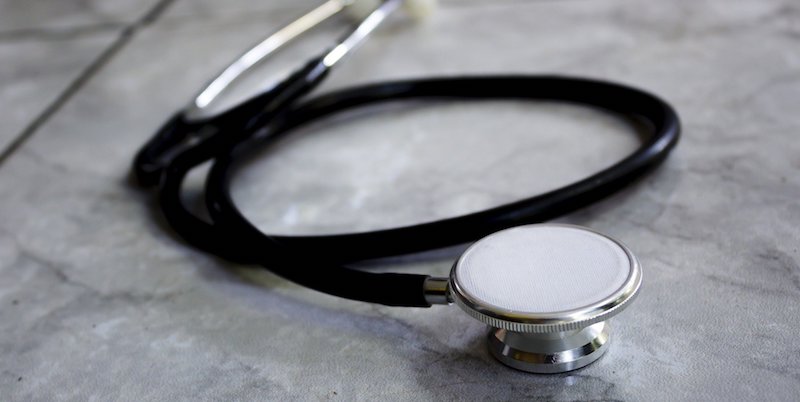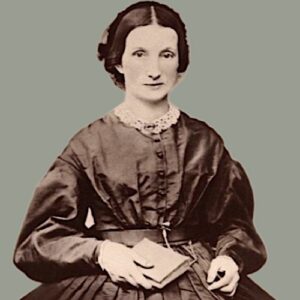Where There Is No Doctor: On Navigating Motherhood and Illness
Diksha Basu Considers Vulnerability and Self-Diagnosis in the Age of WebMD
There was no lack of doctors in our lives, growing up in New Delhi, India in the 1980s and 90s. We lived in a lovely middle class housing complex in Mayur Vihar and Dr. Tara lived in the building next door, his clinic in the main market. We usually went a bit farther to Pocket II to see Dr. Anjan De who I remember now as equal parts family physician and friend. To get to him, we either took our little green Maruti 800 (DDU 981, I still remember the license plate) or hopped in a cycle rickshaw depending on how sick the sick person was. His compact tiled waiting room would be packed each evening during his office hours and my parents would take advantage of the blurred friendship/physician line and poke their head into his office and say hi and he would send his assistant out and see us next no matter how long the line.
If my brother or I needed vaccinations or had any major pediatric health issues—like the time I was running down the steps in my rubber chappals and fell and split my forehead open—we would drive all the way in to South Ex to see Dr. Gul Jagtiani. I don’t remember much about her except her perfectly pleated silk saris that looked so glamorous under her white coat and the plastic container of colorful lollipops that we could help ourselves to at the end of each visit.
Everything isn’t a hop, skip, and click away from a death sentence.Which is all to say that friends were doctors and doctors were friends and we had access to all the medical care we needed but, despite all that, on my parents’ heaving bookshelves, there was a thick, well-thumbed, dog-eared, obviously regularly-read book called Where There is no Doctor. I used to love that book, pulling it out often to look at poorly drawn pictures of broken legs with detailed instructions on how to put on a splint. I learned what to do with a burn and what the signs of Cerebral Palsy are in children. I could probably help give birth to a baby in an emergency and give you some home remedies for constipation or dehydration. I stared with fascination at the amateur drawings of vaginas and penises, things never spoken about, this being India in the 80s and 90s. I learned about allergies and how to administer medicine. I looked at pictures of babies before and after surgery for cleft lips.
And then I mostly forgot about the book’s existence and, like many of my generation, got myself a medical degree from WebMD. I spent—spend—hours on that site, often in states of panic. I learn a lot, I worry a lot. It isn’t healthy, it’s addictive, it’s like scratching an itch until you bleed. I’ve been better about it recently, mostly because time no longer permits those deep hypochondriacal dives into rare illnesses and because I have found somewhat healthier ways to deal with my anxiety. But in America in 2023, in the aftermath of a global pandemic, with a complicated messy health insurance and healthcare system, now there often actually is no doctor.
So two weeks ago, when I was felled by a non-Covid virus that knocked me out and left me intensely exhausted, I remembered the book. Where There is no Doctor. And lo and behold, it was available on Amazon. I ordered it partly because I wondered if it might have suggestions on how to get over post-viral fatigue and largely out of nostalgia, surprised that the book still exists (and indeed has several different editions).
By the time the book arrived a few days later, my energy levels were climbing back to normal and I no longer needed medical answers but once I opened the book, I couldn’t put it down. For starters, it’s much less terrifying than the Internet. Everything isn’t a hop, skip, and click away from a death sentence. In fact, most things can be handled at home. I started reading it page by page, finding pleasure in it the way I usually do in fiction. The information in the book comforted me while also transporting me from New York back to Delhi and our tubelit drawing room and cheese toast being washed down with chilled glasses of neon pink Rooh Afza on a hot summer afternoon where my brother and I were well loved and largely unsupervised.
I showed the book to my husband and told him about having it in Delhi during my childhood.
“But there were loads of doctors where you lived, weren’t there?” he asked.
I had no answer but as I flipped through it, I realized this was my mother’s WebMD when she had young children. The obsession with medical mysteries was genetic and sure, we had doctors but we couldn’t go to doctors with crazy theories that we sort of maybe thought we had but mostly just wanted to know more about. My mother has also since graduated to WebMD. We often find ourselves citing the same information and sometimes I catch a glimpse of my reflection in a car window as I walk down the street and I see my mother and the idea of genetics takes my breath away. Watching myself turn into her morphs my understanding of time and leaves me in a daze. Fortunately, it probably isn’t a brain tumor.
Having children makes you feel nauseatingly vulnerable.I think back to the time I fell on the stairs in my rubber chappals and had to be rushed to Dr. Jagtiani’s clinic. My father was out of town, my mother heard me screaming and came rushing to the stairwell and found me lying in a pool of blood, unsure what had happened or where I had hurt myself. She now tells me she was terrified when she picked me up and saw my face covered in blood and thought I had lost an eye. She had held me in the car, a wet towel pressed against my bleeding head, as we drove through the streets of Delhi at night. With the scar still prominent on my forehead, I had long thought of myself as the center of this story until I had my own children and realized this story belonged to my mother.
Having children makes you feel nauseatingly vulnerable. Having young children during a global pandemic will very nearly drive you insane. Somewhere in my drawers I now own a straw that can convert any water into safe drinking water, at the back of my pantry I have extra large packets of Basmati rice and moong daal that my family could probably survive on for weeks, and I own enough children’s Tylenol to help their entire elementary school with fevers all winter. And on my shelves I have Where There is no Doctor. I also still have Dr. De and Dr. Tara’s numbers in my phone even though I haven’t spoken to or seen either in years.
The other night I found my children poring over the book, looking at the same pictures I had looked at when I was a child in Delhi. Also well loved, my children in Brooklyn are probably far too well supervised and my instinct was to take the book away, to worry that it wasn’t appropriate for them. But instead I let them be. They can barely read but I could hear my six-year-old haltingly read out loud about the effects of tapeworm on the body while my four-year-old listened and nodded. I won’t be able to protect them from the Internet forever but maybe someday they will remember and turn to and find comfort in generations old alternates. Or maybe someday they will decide to have children of their own and they will also feel a complete loss of control and not know what to do and want so desperately to stop scrolling through whatever the equivalent of WebMD will be for them and they will remember the book and they will remember me as a young mother and take solace in the fact that others came before them.
I called my mother to tell her that I had found the book and was writing about it. I was thinking about all those doctors we had growing up, I told her. And those long Delhi summers and the smell of Mysore Sandal soap and chicken curry on a Sunday afternoon, Baba singing old Hindi songs after his bath.
“Dr. Tara died of Covid,” my mother said.




















